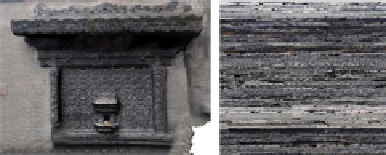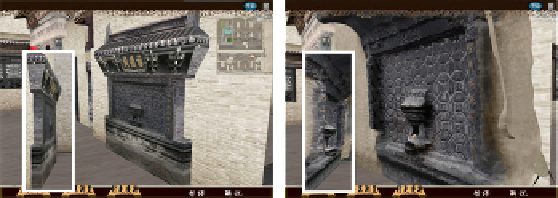Graphics Reference
In-Depth Information
To better visualize the colored model we need a parameterization of the mesh and
create the texture from color information of original point cloud. Finally a model of
surfaces made entirely of right triangles is generated just as Fig.7 shows.
Fig. 7.
PMVS-based Mesh model and texture
4
Results and Discussion
Models created by the first method are most simplified which guarantees a high run-
ning speed. But it requires a long modeling period and produces a relatively poor
sense of reality. The whole process totally relies on the modeler's manual operation.
The second approach based on matching image feature points can reconstruct a mesh
model of artifact with complicated shape, while the process of selecting feature points
requires some degree of interaction. The third method based on PMVS algorithm can
obtain a complete model containing detail information with an entirely automatic
procedure.
According to the experiment results, PMVS algorithm based on photos outper-
forms the geometric modeling method in presenting details. The right-side screen wall
in Fig.8 was produced by PMVS algorithm with an obvious detail model in the mid-
dle part, while there is just a flat surface in the left-side one.
Fig. 8.
Experiment results comparison
(Left: A flat surface based on modeling software; Right: Detail surfaces based on PMVS)
Conclusion can be made by the comparison of the last two methods based on same
photo series of stone lion: they both obtain photo-realism of the results with short
modeling periods. The difference is the mesh number. The stone lion model produced
by the second method has 1,900 meshes, while the model produced by the third me-
thod has 64,785 meshes (See Fig.9). As each frame was real-time computed by the
video card and CPU in a virtual interactive presentation program, excessive number


Search WWH ::

Custom Search